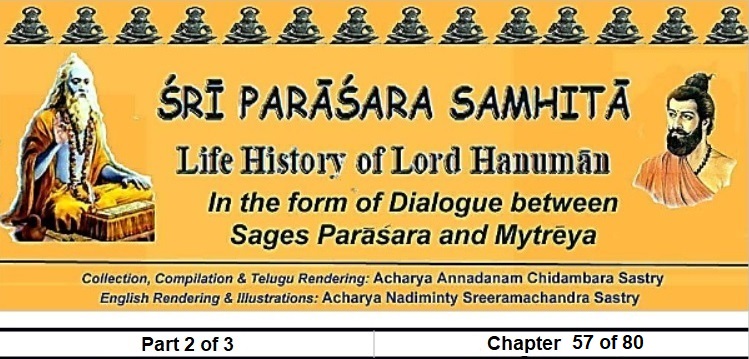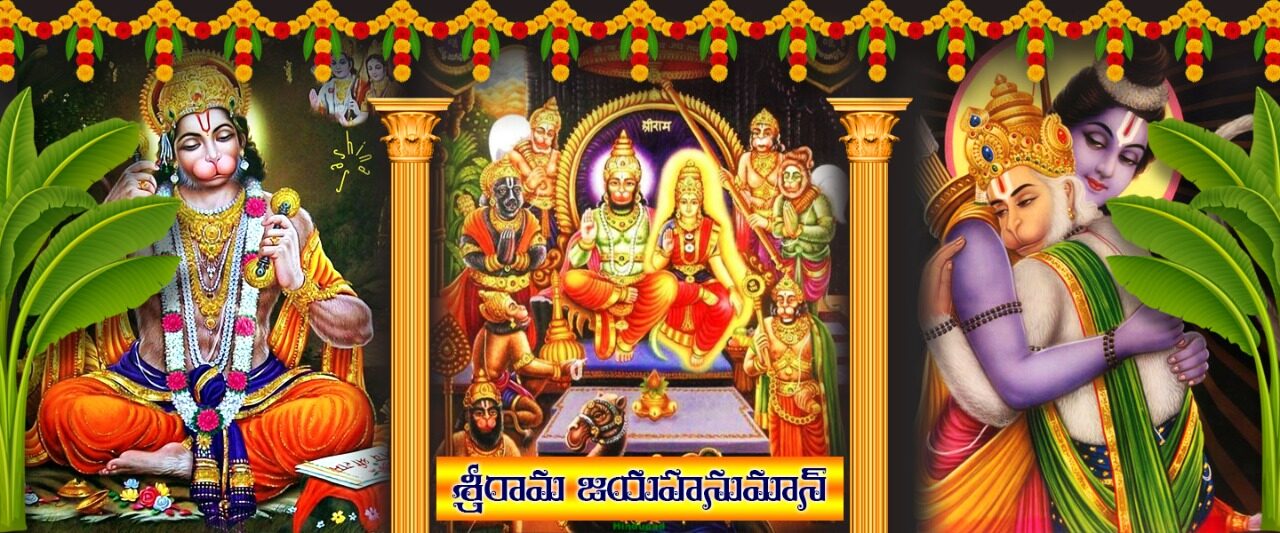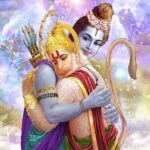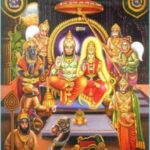
57th Chapter (Saptapancāśat Paţalah)
“Description of the Exaltation of the Mantra”
(Mantra samskāra Kathanam)
श्रीपराशरः।
अन्यं विशेषं वक्ष्यामि-मैत्रेय! शृणु तत्त्वतः
मंत्राणां हि विभागो स्ति-जीवना जीवभेदतः।। 1
Śrī Paraāśara:
“Oh! Mytreya! I am telling another special feature. Listen carefully. There are two varieties of mantras as ‘live’ (jeeva) and ‘not live’ (ajeeva). (1)
संस्कृता जीवना मन्त्रा-जीवतश्चा पि ते स्मृताः
दशसंस्कारहीना ये-मन्त्राः मंत्रविदां वर।। 2
The mantras that are exalted (sublime experience based, samskŗtā) are ‘live’ (jeeva), with life. Oh! Mantra scholar! There are ten types of lifeless mantras. (2)
अजीवनास्तु ते प्रोक्ता-अजीवाश्चपि ते स्मृताः
द्विविधानां तु मंत्राणां-विशेषो विद्यते महान्
सद्यस्सिध्यन्ति जीवन्त-स्तदन्ये तु विलम्बिताः।। 3
They are known as ‘not live’ (ajeeva) mantras. Know the same as lifeless. There is a great difference between the two types of mantras. ‘Live” mantras give immediate achievement (siddhi). ‘Non live’ ones take a long time for achievement”. (3)
श्रीमैत्रये:
क्लेषदशा पि संस्काराः-मन्त्राणां शुद्धिहेतवः
तन्ममाचक्ष्व योगीन्द्र!-लोकानुग्रहहेतुना।। 4
Mytrēya:
“Oh! Great Seer Parāśara! Though the ten exaltations are complicated, they are the reason for purification of the mantras. Hence, Oh! Great Yōgi! Tell me about them, as they are for bestowing benevolence to people. (4)
श्रीपराशरः
जननं जीवनं पश्चात्ताडनं बोधनं तथा
अथा भिषेको विमलीकरणा प्यायनी पुनः
तर्पणं दीपनं गुप्तिः-दशैता मंत्रसंस्क्रियाः।। 5
Śrī Paraāśara:
Mantra Exaltation
The ten exaltations (samskārāh) of mantras are – birth (jananam), life (jeevanam), physical punishment (tādanam), teaching (bōdhanam), ablution (abhişēkam), purification (vimaleekaranam), nourishment (apyāyanam), satiating (tarpaņam), enlightenment (deepanam) and keeping secret (guptam). (5)
लक्षणानि क्रमेणासां-मत्तो निगदिताः शृणु
यच्छ्रुत्वा परमां प्रीतिं-मैत्रेया धिगमिष्यसि।। 6
I am telling the features of these, one by one. Listen, and by listening, Oh! Mytrēya! You will feel very happy. (6)
सौवर्णे राजते वा पि-ताम्रे वा भाजने तथा
कदले वापि पालाशे-पद्मपत्रद्वये पि वा।। 7
In a golden vessel or silver vessel or copper vessel or banana leaf or in a leaf of the Flame-of-the-Forest (palāsa) or in two leaves of lotus, (7)
नूतनं धौतवस्त्रं च-यथाशक्ति प्रकल्पयेत्
तस्योपरि महाशुभ्रान्-अव्रणान् शालितंडुलान्
विन्यसेन्निवृतस्वांतः-स्मरन् स्वाभीष्टदैवतम्।। 8
New, white clothes have to be placed as per one’s capacity. On these, one has to keep grains of śāli paddy variety while uttering the name ones desired God. (8)
गुरुं सम्पूज्य विधिवन्मंत्राराधनतत्परः
तंडुलोपरि पंचाशदक्षरान्विलिखेत्सुधीः।। 9
Worshipping one’s teachers (guru) as stipulated, one has to write 50 letters on it. (9)
पूजयेत्प्राङ्मुखस्थानि-गन्धपुष्पाक्षतैश्शुभैः
निवेदयेद्गुडं चैव-फलं वा क्षीरमेव वा
प्रदक्षिणनमस्कारान्कुर्वीता नन्यमानसः।। 10
The letters on the eastern side have to be worshipped with sandal wood paste, flowers and sacred rice. (10)
ततःस्वाभीष्टमन्त्रस्य-वर्णान्पात्रात्समुद्धरेत्
यदक्षरं लिखित्वाशु-वर्णानां पूर्यते बुधः।। 11
Then letters of the wished mantra have to be taken out. By writing which letter first, the scholar quickly fills the letter-combinations (varņa) (11)
तद्वर्णं पूर्णपात्रस्थं-मान्त्रिकः प्रविलोपयेत्
इति सर्वाक्षराण्येव-मन्त्रपूर्वाण्यनुक्रमात्।। 12
That letter has to be reversed (set opposite) by the mantra performer. In this manner, reciting the mantra, all the letters in the given order, (12)
अन्यत्र विलिखेत्पात्रे-पूर्वतो घृष्तिपूर्वकम्
इदं जननमित्याहुःमन्त्रस्या दिमसंस्क्रियाम्।। 13
The letters are to be written legibly in another vessel/leaf from the first (earlier) one. This is the act of exalting a mantra, this process is known as mantra jananam (birth of the mantra). (13)
लिखितानांतु वर्णानां≦क्पात्रान्तरे तथा
प्राणप्रतिष्ठाविधिना-धावयेन्मन्त्रवर्णकान
इदं जीवनमित्याहुः-द्वितीया संस्क्रिया परा।। 14
After writing neatly in another vessel/leaf the mantra has to be washed with the life-imparting procedure (prāņapratişţţhavidhi). This is known as the second exaltation ‘jeevanam’ (life). (14)
लिखिताक्षरमन्त्रस्य-समच्ु चारणपूर्वकम्
सुगन्धपुष्पमाल्याद्यैःपात्रे स्मिन् लिखिताक्षरे
ताडनं पाणिना वेगात्-पव्म्चवारं प्रयत्नतः।। 15
Reciting loudly the written mantra, with the hand adored with fragrance, flowers and little garlands, one has to purposefully beat on the written letters five times fast. (15)
इदं ताडनमित्याहुः-तष्तीया संस्क्रिया परा।। 16
This is the third exaltation known as tādnam (physically beating). (16)
ताडितस्यैव मन्त्रस्य-पुरतो विनयान्वितः
ताडनाद्यपराधान्वै-सद्य एव क्षमापयेत्।। 17
Immediately after beating in this manner, one has to stand, with reverential decorum, before the mantra and profusely apologise for the sin of beating. (17)
बोधयेत्प्रियवाक्यैश्च-त्वदधीनो हमित्यपि
इदं बोधनमित्याहुः-चतुर्थी संस्क्रिया परा।। 18
One has to explain in a pleading manner that one is its subservient self. This is the fourth exaltation known as bōdhana (explanation or teaching). (18)
तत्र पव्म्चामृतौः पात्रे-स्नापनं विधिना च यत्
लिखिताक्षरमन्त्रस्य-समच्ु चारणपूवर्क म
अभिषेकमिदं प्राहुः-पव्म्चमी संस्क्रिया परा।। 19
Then while reciting, the mantra containing the letters written in the vessel/leaf, one has to be performed ablutions (abhişēkam) with the five nectars (pańcāmŗta – honey, liquid jaggery, cow milk, yogurt and ghee). This is the fifth exaltation known as abhişēkam (ablution). (19)
अभिषिक्तस्य मन्त्रस्य-लिखिताक्षररूपिणः
मलापकर्षणार्थाय-क्षालयेच्छुद्धवारिणा
विमलीकरणं प्राहुः-षष्ठसंस्कारसंज्ञकम्।। 20
After abhişēka, so as to remove the impurities from the written form (with alphabets) of the mantra, one has to clean it with pure water. This sixth exaltation is known as vimaleekaraņa (purification). (20)
फलापूपादिसंपूर्णशर्कराघृतपायसैः
शाल्यन्नसूपशाकाद्यैर्नैवेद्यैरमृतोपमैः।। 21
Nectar like (amŗtatulya) food offering (naivēdya) is made along with fruits, cakes fried in ghee and others, sugar, ghee, rice pudding (kşeerānna), vegetables, pulses, leafy vegetable and others, (21)
सुगन्धपुष्पमालाद्यैश्शोभितैर्मष्दुलांबरैः
लिखितं शोभितं मन्त्रं-मुहुराप्याययेत्सुधीः
इदमाप्यायनं प्राहुः सप्तमी संक्रिया परा।। 22
The scholar has to respect the resplendent mantra satisfactorily, with fragrance, flowers, garlands, soft clothing and others. This is the seventh exaltation known as apyāyana (nourishment). (22)
लिखिताक्षरमन्त्रस्य समुच्चारणपूर्वकम्
गङ्गोदकैर्गवां क्षीरै-र्नारिकेलजलेन वा।। 23
While reciting, with the sacred water of River Gangā or cow milk or at least with coconut water, the written letters of the mantra, (23)
संतर्पयेत्पव्म्चवारं-पात्रस्थं वर्णमुत्तमम्
इदं तपर्णमित्याहुः-अष्टमी संस्क्रिया परा 24
The sacred letters written in the vessel have to be offered water (tarpaņa) five times. This is the eighth exaltation of the mantra, known as tarpaņa (giving water). (24)
सन्दीपयेन्महामन्त्रंङ्नीराजनादिभिः
लिखिताक्षरमंत्रस्य-समुच्चारणपूवर्क म
इंदं दीपनमित्याहुः-नवमी संस्क्रिया परा।। 25
While reciting, the written letters have to be enlightened by burning camphor (neerājanam). This is the ninth exaltation of the mantra known as deepana (giving light). (25)
सर्वदा गोपयेन्मन्त्रं-न दद्याद्यस्य कस्य च
स्वयमावतर्यन्नित्यं-हनूम्ंतमनुस्ममरन
इमां तु गुप्तिरित्याहुर्दशमी संस्क्रिया परा।। 26
This mantra has always to be kept secret. Any and every one should not be given the mantra. The mantra has to be always recited, thinking about Hanumān. This is the tenth exaltation of the mantra known as guptam (keeping secret). (26)
एवं समस्तमंत्राणां-कर्तव्या दश् संस्क्रियाः
अजप्तो गुरुणाप्येवं-दशसंस्कारसंकृतः
महाप्रकाशतामेति-शाणोल्लीढ़मणिर्यथा।। 27
Impartation
All the mantras have to be exalted in these ten manners. Even though not recited, a mantra that is exalted in this manner by the guru, shines bright like polished diamond. (27)
मन्त्रस्याप्युपदेशार्हशिष्याय प्रियवादिने
शुभे दिने शुभे मासे-नक्षत्रे च शुभे तथा
शुभे लग्ने सिते पक्षे-मन्त्रं दद्याद्यथाविधि।। 28
A guru-benefactor (sponsor) should impart his mantra to only capable and pleasant speaking persons, on an auspicious day, in an auspicious month and fortnight, in an auspicious star-constellation and in an auspicious time (lagna). (28)
यावन्नास्तगतश्शुम्क्रः-गुरुर्वा बृह्तां पतिः
तावदेव गुरुर्दद्यान्मंत्रं सूर्योत्तरायणे।। 29
The guru has to impart this mantra to his pupuil (śişya) during the north-inclining phase of the Sun (uttarāyaņa), avoiding ill-omened days (moodham) when Śukra (Venus) and Bŗhaspati (Jupiter) are not visible (astamay = set, like sun set). (29)
शुभां ग्रहगतिं वीक्ष्य-द्वयोश्च गुरुशिष्ययोः
तदा मंत्रः प्रदेयो वै-पूर्वाहणे शुभलक्षणे।। 30
Both the Guru and śişya have to make sure that their planetary positions (in horoscope) are ideal; the Guru has to impart the mantra to the pupil in the morning time. (30)
यदा अर्थाेदयः पुण्यः-प्राप्यते वा महोदयः
चंद्रादित्योपरागो वा-गोविंदद्वादशी यदि।। 31
When there is pure/sinless (puņya) time of semi-rising (arthōdaya) or full-rising (mahodaya) (of Planets) or it is lunar eclipse or solar) eclipse time, of if it is the Givindadwādasi (the 12th day in the brightening star fortnight dedicated to the Lord of Cows = Kŗşņa), (31)
विषुवंचापि प्राप्तायां-शिवरात्रौ जयातिथौ
अविचार्य तदा देयः-शिष्यस्य प्रार्थना यदि।। 32
On the days when day and night are of the same duration (March 21 or September 21) or on the day of Şivarātri (Şiva’s Night) or the auspicious 3rd (tadiya), 8th (aşţami), 13th (trayōdaśi) Auspicious Days (jayatithi), of the lunar month, the Guru can impart the mantra without second thoughts, if a Śişyaprays fervently. (32)
पुण्यक्षेत्रे तथा तीर्थे-यदि स्यात्सङ्गतिद्र्वयोः
सद्य एव हि दातव्यो-नात्र कार्या विचारणा।। 33
If the Guru and Śişya meet at a pilgrimage Centre (puņyakşētra) or a holy water body (puņyateertha), the mantra can be imparted without any hesitation. (33)
न गण्यते ग्रहगतिर्न वा शुक्रादिमूढता
नक्तं दिवा विभागो वा-न वा विंध्यादिदेशता।। 34
There is no need to consider auspiciousness the planetary positions or the ill-omened Venus setting rime (śukrsmoudhyami) or day and night or even good places like Vindhya mountain ranges. (34)
स एव योग्यकालस्स्यात्-पात्रे मन्त्रार्पणं यदि
बहुना त्र किमुक्तेन शृणु मे निश्चितं वचः।। 35
To give mantra impartation to an adept right person, the available time is the right time. There is no need to explain this in many ways. Listen to the determined words. (35)
भक्तिरेवात्र मूलं स्यान्न वर्णकुलसंपदः
भक्तिं विदित्वा भक्तस्य-चिरप्रणयनादिभिः।। 36
Devotion is everything, the main thing, for this. It is not bound by things like caste, profession and propriety. Knowing the true nature of devotion of the devotee by experience over a long time, (36)
दंभाय वा न दातव्यः-न च मत्सरिणे तथा
अनूसूयाय दातव्यः-न वक्रगतये तथा।। 37
Do not impart the mantra to one that is avarice or not good in behavior or has tendency of self-aggrandizement. (37)
अतिमूढाय नो देयः-देयो विनयशालिने
शीलं विज्ञाय चेष्टाभिः-शुश्रूषाप्रणयादिभिः
प्रसन्नं यदि चेतस्स्याद्दातव्यस्सद्य एव हि।। 38
A thorough fool should never be given the mantra. Only give the mantra to one with reverential decorum. If a Guru feels pleasantly for a Śişya, because of his good behaviour, services rendered, pleasant demenor, the mantra can be given right away. (38)
चंद्रसूर्योपरागेषु-मंत्रं नोपदिशेद्बुधः
प्रमादादथवा दद्याद्दारिद््रयं हनुमन्मनोः।। 39
One who is knowledgeable about the Hanuman mantra, should never impart the mantra during lunar or solar eclipse. If done so by mistake or misunderstanding, utter plenary will result. (39)
शबराणां तु मंत्राणां-चन्द्रसूर्योपरागयोः
उपदेश प्रशस्तस्स्यान्नेतरेषां कदाचन।। 40
It is good to impart only the forest or folk or black-magic (śābara) mantras during solar and lunar eclipses. Never the other manatras. (40)
उपरागे महामन्त्राः-नोपदेश्याः कदाचन
अन्यथोपदिशेन्मोहाद्-दारिद््रयं कोटिजन्मसु।। 41
Auspicious great mantras should never be imparted during solar and lunar eclipses, as such act can cause destitution for a million lives. (41)
इति निगदितमार्यवृत्तं तुभ्यं
सकलमपि स्वयमांजनेयवृत्तं
अपि निजरक्षणैव दीक्षा
वशगतदिव्यमहाभावः।। 42
Oh! Mytrēya! You were told about the history of Lord Hanumān, who exists in the minds of all people. Protect the secrecy of this Hanuman mantra as you protect yourself. (42)
![]()
इति श्रीपराशरसंहितायां श्रीपराशरमैत्रेयसंवादे मंत्रसंस्कारकथनं नाम सप्तपव्म्चाशत्पटलः
Thus ends the 57th Chapter “Description of the Exaltation of the Mantra”

Click here to visit the Contents of the Part 2.







Be First to Comment